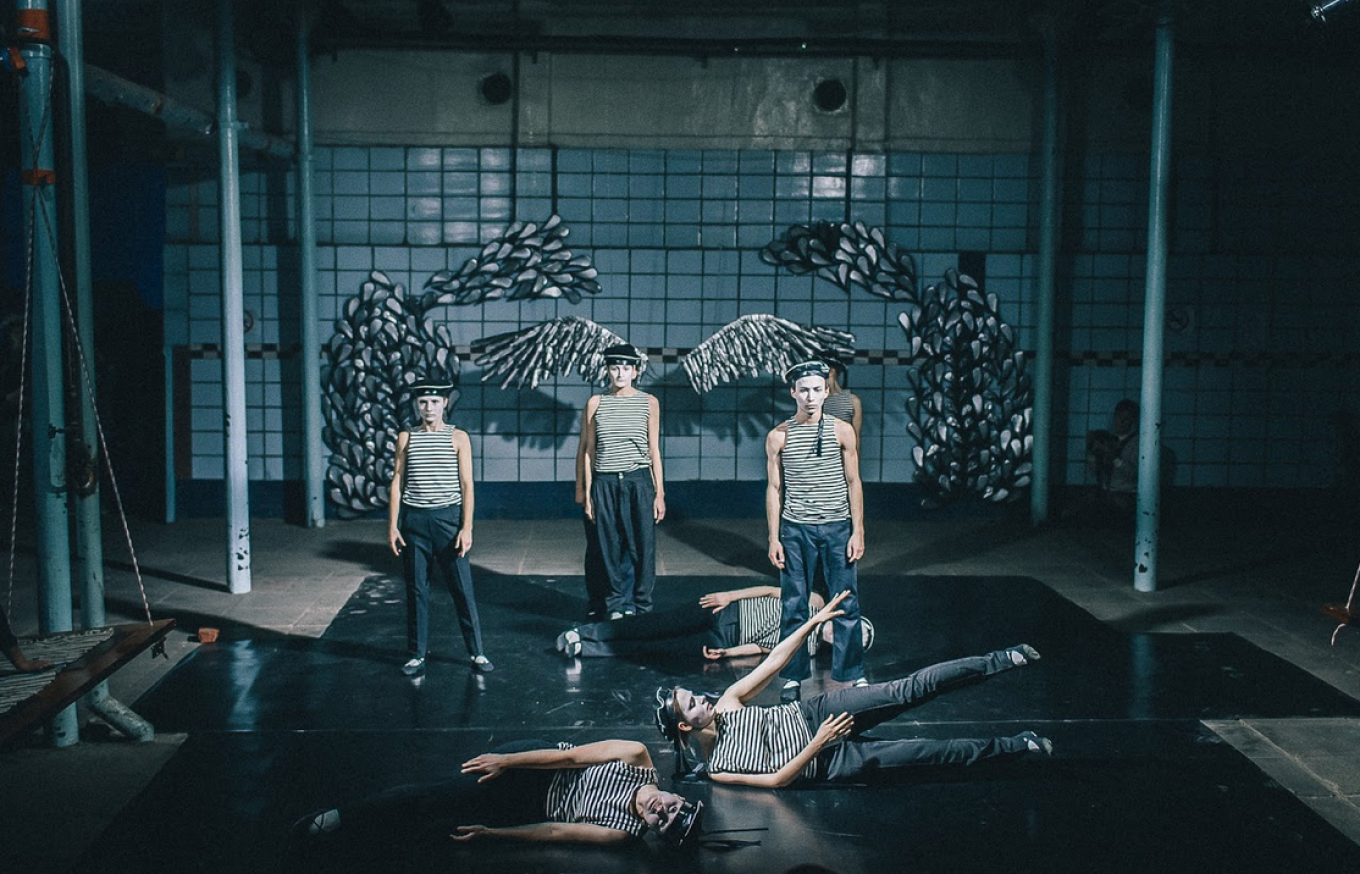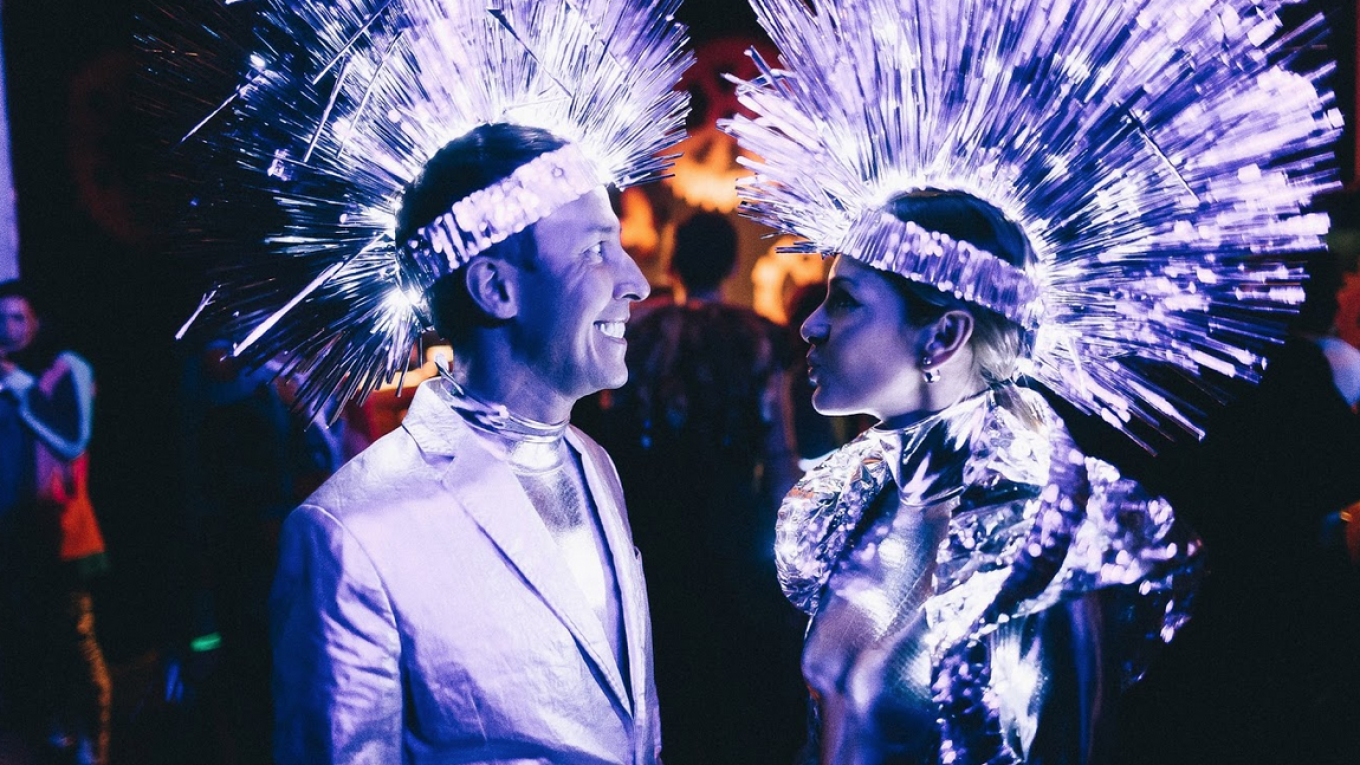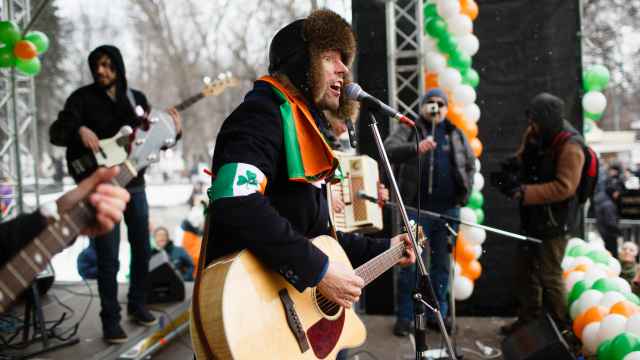Burning Man fans, or burners, are a fast-growing community in Russia. This year thousands are preparing for Moscow Decompression 2016, a regional party that embodies the spirit of the Nevada festival.
This is the fourth time the party has been held in Moscow and as with previous years guests can expect flamboyant and freaky costumes, dance and theatrical performances, a contemporary art zone and an international line-up of DJs on not one, but six dancefloors — not to mention plenty of opportunities for spontaneous self-expression. As is tradition, the venue of the event, which takes place on November 26, is yet to be announced. Guests will only be alerted to the location a couple of days before the party.
The term "decompression" has been appropriated in the lexicon of burners around the globe. A post-festival gathering after the week-long Nevada event, decompression parties aim to ease revelers back into normal life. They also offer a chance for those who didn't make it to the festival to experience the unique atmosphere of Burning Man.
During the summer festival. which takes place in Black Rock City,
Nevada, a temporary community is created in the middle of the desert. Festivities culminate with the burning of a giant wooden effigy. In 2015 over 70,000 people were estimated to have attended the festival, although the numbers for decompression events are much smaller.
“We are expecting three to five thousand participants this year — twice as many as in 2015. This year we have over 250 volunteers helping with the organization of the event,” said Dasha Zelenskaya, the producer of Moscow Decompression 2016.
The first decompression in Moscow took place in 2013 at Arma 17 night club, after two years of activity by local burners on Facebook. The organizers stated that back then it was difficult to explain to artists why they should want to take part in the event for free. Three weeks before the party the artist call was announced — anyone could propose their artwork ideas for the venue and fifty artists made it through selection.
This year organizers received more than 350 applications, not only from underground acts, but also from esteemed institutions like the MARS Center for Contemporary Art. The line-up this year even includes DJs who have played at Burning Man itself.

Despite the size of the event, organizers face difficulties every year. Like Burning Man, decompression parties are non-profit and are only made possible by the help of volunteers. Neither staff nor contributing artists make money from their participation. Organizers state that any profits at the end of the event support various artistic projects like Burning Man Island on the Venice Biennale 2017.
But there are other problems — some burners feel the festival and its associated decompression parties have fallen victim to their own success. What was initially intended as a local reunion for Burning Man participants has become a fashionable phenomenon for Moscow's "it crowd." Burners who have attended the real event say that the Nevada costumes differ a lot from those worn at decompression parties.
“People
really prepare for the event in Nevada, while here most party-goers
don't bother being creative, although some do pay attention to their
outfits. At the early parties in the old Arma club you could still feel
the spirit,” said Victoria Neretina, a veteran burner.
According
to Neretina, a costume costs on average ten thousand rubles at a
specialist tailor shop. Burners will then wear the outfit at the Black Rock
event and put it on later for the decompression party. Another option
is to buy a cheap second-hand item and alter it at home. Those coming to
the party without a special outfit can borrow clothing at the door for
free and return it at the end of the party. But the costumes are not the
only difference.
“In Nevada you enter another, more conscious civilization. People walk around naked and no one thinks it's odd. Here the public is very different. There are a lot of stereotypes and prejudices and no real awareness of what people are trying to achieve. Most of the people just come to watch and few of them are really involved. But there has been steady progress, and in five to ten years the Russian community will get big,” said Neretina.
This is quite possible, given that Russian is the fourth most-spoken language at the "playa," the festival ground in Nevada. However, it's hard to estimate how many people actually come from Russia — the language is spoken by numerous residents of Ukraine and the US as well.
As
with Burning Man, decompression parties are based on ten principles.
These include radical self-expression, no sponsorship
(decommodification), gifting, communal effort and leaving no trace of
the event once it is over. This year's Burning Man art theme was inspired by the Italian Renaissance of the mid 15th to and early 16th centuries.
To find out more about Moscow Decompression 2016 on November 26 and to buy tickets, visit the Facebook page.
A Message from The Moscow Times:
Dear readers,
We are facing unprecedented challenges. Russia's Prosecutor General's Office has designated The Moscow Times as an "undesirable" organization, criminalizing our work and putting our staff at risk of prosecution. This follows our earlier unjust labeling as a "foreign agent."
These actions are direct attempts to silence independent journalism in Russia. The authorities claim our work "discredits the decisions of the Russian leadership." We see things differently: we strive to provide accurate, unbiased reporting on Russia.
We, the journalists of The Moscow Times, refuse to be silenced. But to continue our work, we need your help.
Your support, no matter how small, makes a world of difference. If you can, please support us monthly starting from just $2. It's quick to set up, and every contribution makes a significant impact.
By supporting The Moscow Times, you're defending open, independent journalism in the face of repression. Thank you for standing with us.
Remind me later.






